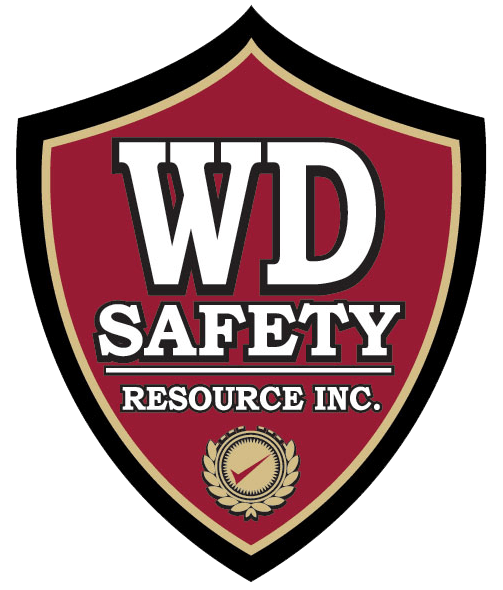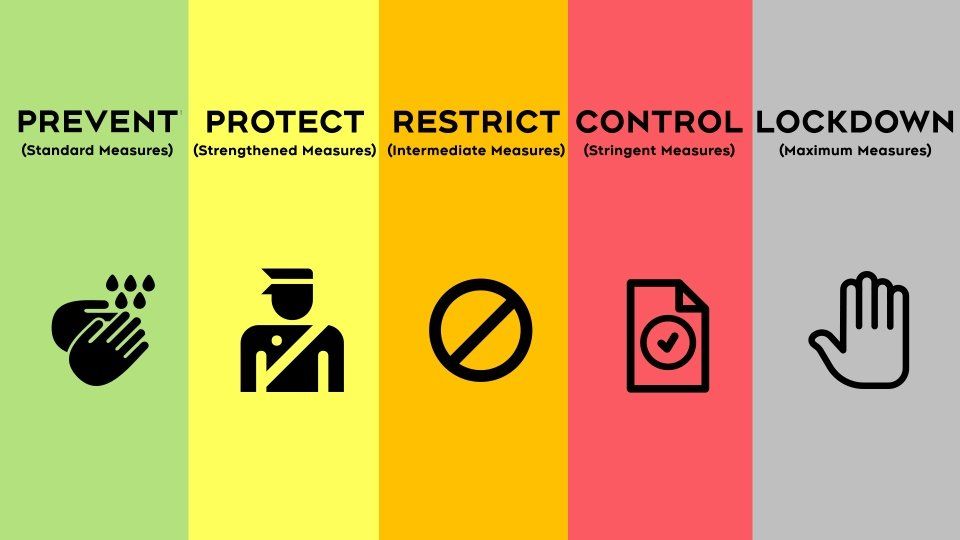News & Updates
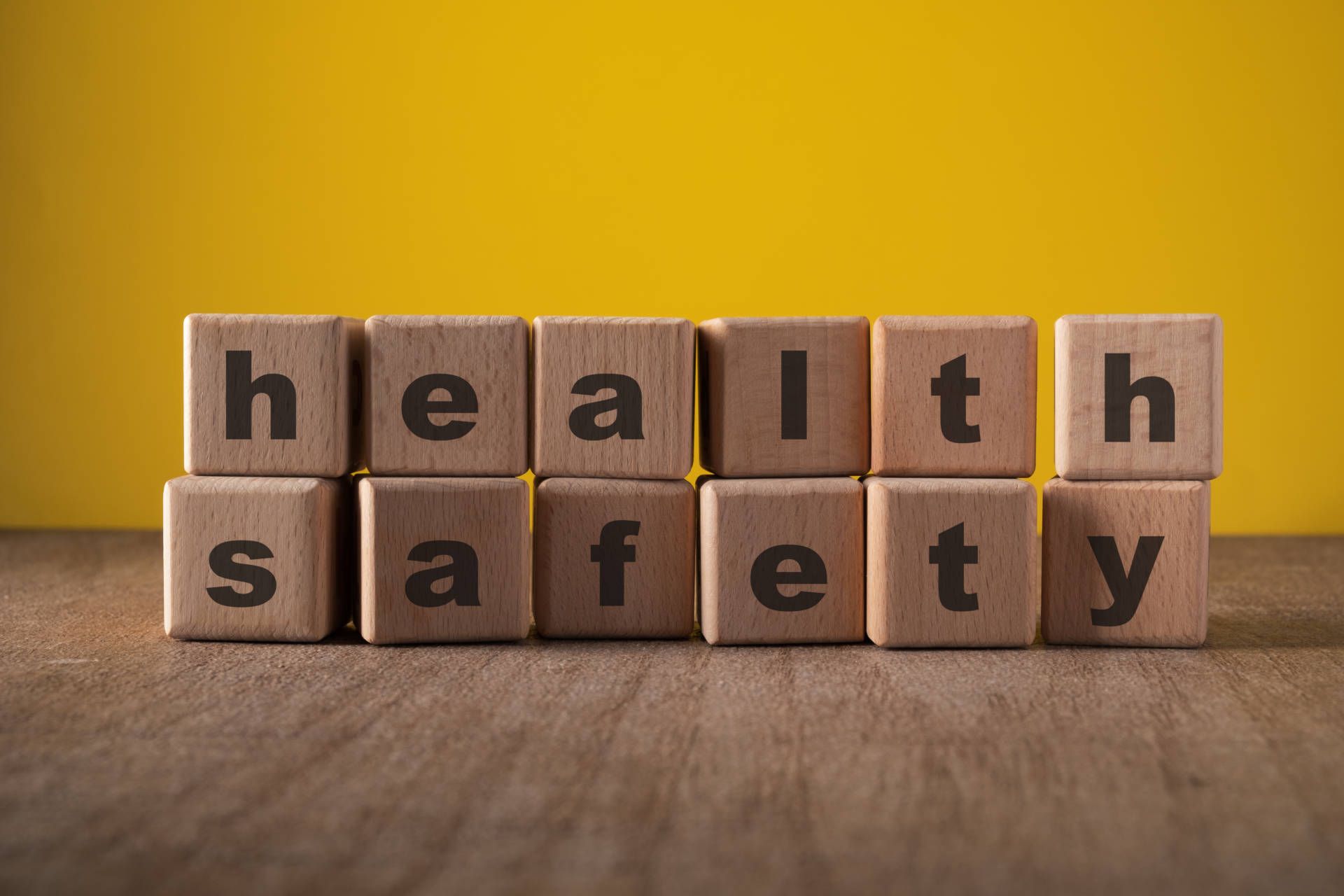
April 22, 2022
Published by Vanessa Balintec of CBC News - April 20, 2022 A new survey suggests almost 20 per cent of Canadian businesses do not offer safety and orientation programs that are legally required for new workers in much of the country — a finding one labour law expert calls "shocking" and evidence of "widespread lawbreaking." The research, conducted by Angus Reid and commissioned by Threads of Life, a group that advocates for workplace safety, reflects a reality Cynthia Kathleen "C.K." DesGrosseilliers knows all too well. Her brother Tim was killed by falling equipment while on the job in downtown Toronto five years ago. She's been fighting to raise awareness about workplace safety ever since. "Tim would say that we need employers and supervisors that make safety priority one," the Toronto resident told CBC News. DesGrosseilliers says she can point to three major factors that led to his death: he was assigned the job at the last minute, he wasn't given a spotter while working and he didn't have up-to-date training. Her brother's death is one of more than 3,800 that occurred in Canadian workplaces from 2017 to 2020, according to the Association of Workers' Compensation Boards of Canada. DesGrosseilliers, who's a member of Threads of Life, says the results show many employers still need to be held accountable so new workers don't meet her brother's fate. "I think he would think of his nephews and nieces and he would think they deserved all the support that they can be given," said DesGrosseilliers. "It really is the most important thing for people to come home at the end of the day." 545 companies surveyed The survey was conducted from March 23 to 25 with hiring managers at 545 companies who are members of the Angus Reid Forum. The poll has a comparable margin of error of plus or minus 4.2 percentage points, 19 times out of 20. A total of 102 of those managers said their companies offer no orientation, onboarding, safety, emergency, hazard or illness and injury protocol training. Companies that have 29 employees and under make up 52 per cent of the firms that had none of these programs in place. Shirley Hickman, the executive director of Threads of Life, says her group wanted to understand how businesses are approaching workers' safety and hiring after two years of the COVID-19 pandemic. "Young workers didn't have jobs because of the pandemic. And then coming out of the pandemic, was that going to lead to more employers hiring more than normal?" said Hickman, whose son died at 20 years old in a 1996 workplace explosion in London. "And that proved to be true," she says. The survey suggests 27 per cent of companies in high-risk sectors, such as agriculture and resources, construction, energy, manufacturing and transportation, plan to hire more young workers than in the previous two years. Hickman says despite the growing awareness of occupational health and safety over the past few years, she's worried about young people going back to dangerous workplaces like construction sites and farms as pandemic restrictions ease. She hopes they'll learn about their rights and demand safe working conditions. "There's work to be done until there's no injuries, no illnesses, no deaths," she says. Eric Tucker, a labour law expert and professor at York University's Osgoode Hall Law School in Toronto, says each province has different regulations, but health and safety legislation generally imposes a duty on employers to provide instruction and training to workers. In Ontario, the home of almost 40 per cent of the businesses Angus Reid surveyed, those responsibilities are outlined in the Occupational Health and Safety Act. For companies to admit openly that they don't offer training that's mandated by legislation shows there is "widespread lawbreaking" taking place — partly due to weak enforcement by the province, Tucker says. "Every employer is required to have a safety program of one sort or another, so the admitted absence of those programs is really a shocking finding." A spokesperson for the Ontario Ministry of Labour told CBC News the province is "proud to support Threads of Life" in its effort to make workplaces safer. "Ontario has one of the best safety records in Canada. Our preventative, proactive approach emphasizes safety first, preventing or correcting workplace hazards to protect workers," Ciara Nardelli wrote in an email statement. "Our focus is on improving health and safety awareness and practices in small businesses and ultimately helping to lower number of workplace injuries, fatalities and illnesses." A 2019 report by the Auditor General of Ontario put forward 27 recommendations for the Ministry of Labour to strengthen enforcement of workplace safety. The office's follow-up report in 2021 said 11 per cent of the recommendations have been implemented, 52 per cent are in the works, and 33 per cent have shown little to no progress. Tucker says until the legislation catches up with the reality of the province's workplaces, businesses won't have any incentive to create safe environments. "The lack of good health and safety does not drive companies out of business."
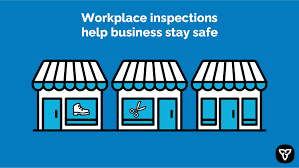
September 27, 2021
Ontario Newsroom - News Release September 27, 2021 TORONTO – The Ontario government is continuing to protect workers and people from COVID-19 by providing businesses with new tools and educational resources, including a new safety plan builder and additional inspectors. More than 100 new health and safety inspectors are graduating today and will be visiting workplaces in construction, industrial and health care settings. With the support of provincial offences officers, the inspectors will be deployed to help educate workers and businesses about the newly-launched vaccine certificate. “As we fight the fourth wave of COVID-19, we need all hands on deck,” said Monte McNaughton, Minister of Labour, Training and Skills Development. “With 100 more inspectors, these boots on the ground across our province will help keep workers safe and support businesses to remain open. Our government’s inspectors will be patient, lead with education, and be reasonable to business owners and frontline workers implementing the vaccine certificate.” The addition of these graduates means Ontario now has a total of 507 labour inspectors , the largest ever number in provincial history. Over the coming weeks, in consultation with local public health units, Ministry of Labour, Training and Skills Development inspectors and other provincial offences officers will continue conducting inspection and education campaigns to ensure businesses are following COVID-19 safety requirements. To help businesses stay on top of health and safety guidance, the province has also launched the new Workplace Safety Plan Builder , a free interactive tool making it easier for workplaces to create and update their COVID-19 safety plans. The tool was developed specifically to support small businesses and was designed with their input. The safety plan builder will lead employers through an easy process to create and update an online safety plan that is right for their workplace. It also allows for easy customization and employers who sign up for updates will be notified when information is changed, allowing them to stay up to date with current guidance and requirements. “Running a small business during COVID-19 is a challenge unlike any other,” continued Minister McNaughton. “Our safety plan builder is here to help our local merchants and shopkeepers create and adjust their plans with the click of a button, having confidence they’re following the latest health and safety measures for their employees and customers.” Having a written safety plan is mandatory for businesses permitted to be open under the Reopening Ontario Act. Since March 2020, provincial inspectors have conducted more than 65,000 COVID-related workplace inspections, issuing 79,200 orders and stopping unsafe work 102 times. Data from the most recent visits, conducted over the summer, shows the education assistance provided by inspectors helped double the number of businesses who were fully compliant with their responsibilities under the Reopening Ontario Act.
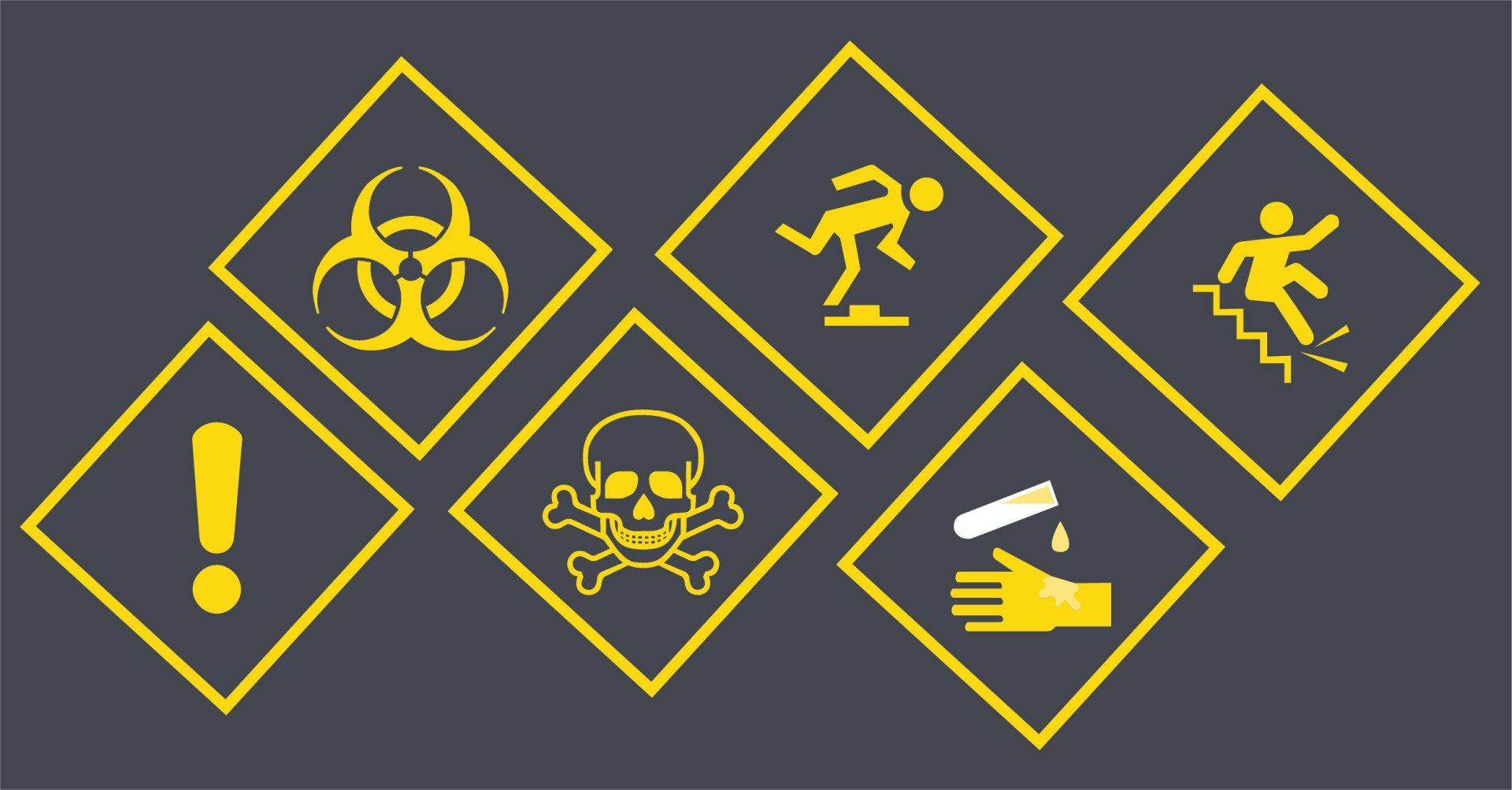
July 27, 2021
Published by the Canadian Centre for Occupational Health and Safety July 12, 2021 Maintaining and promoting health and safety in the workplace is important throughout the employee journey. Whether they’re a new worker or a seasoned professional, training (and retraining) is a key factor that can help staff stay safe while on the job. In addition to providing training, employers must abide by a number of occupational health and safety responsibilities. Many of these elements, worker rights and employer responsibilities are similar across jurisdictions in Canada. However, the specifics around occupational health and safety legislation and how these laws are enforced can vary from one jurisdiction to another. Although rules and regulations vary, these three rights apply to all workers in Canada: The right to know about health and safety matters. The right to participate in decisions that could affect their health and safety. The right to refuse work that could affect their health and safety, and that of others. Workers also have health and safety responsibilities. They must work in compliance with occupational health and safety legislation, and use personal protective equipment and clothing as directed by the employer. Employees also have a duty to work in a safe manner, use the prescribed safety equipment, and report workplace hazards and dangers to their supervisor or employer. To carry out their responsibilities, workers need to know what these are, and that’s where managers, supervisors and employers come in. Managers and supervisors act on behalf of their employer. Therefore, they’re required by law to take every reasonable precaution to protect their workers, and they must ensure that workers are performing their jobs safely and are following occupational health and safety legislation. This means that workers need to be trained on potential and actual hazards associated with their job, provided with written instructions on the measures and procedures taken to protect them, and use all appropriate personal protective equipment and devices. Here are some ways you can implement health and safety measures at work: Implement and Communicate a Policy A health and safety program is a requirement in any workplace, and having a written policy is key to its success. Think of a policy as a plan of action. It indicates the degree of the employer’s commitment to health and safety and should reflect the special needs of your workplace. The policy should also be explained and understood by any and every worker and provided in written form in the language of staff. It should be positive in tone (for example, focus on what the worker should do rather than what they should not), and periodically reviewed to evaluate its effectiveness. The policy should be signed by leadership, and include items and statements such as the employer’s duty to give health and safety education and training to all employees, the development and maintenance of health and safety roles and procedures, and planned programs that support the commitment to workers’ health. It should make clear that co-operation on the part of all employees is vital to the success of the health and safety policy and should be actively incorporated into the workplace and regular workplace duties and actions. To start, it’s important to make sure all employees are aware of it and understand the policy. Workplaces can achieve this by incorporating it as part of employees’ job descriptions, and then reinforcing the commitment to health and safety by holding regular safety talks, posting signs at the workplace, by writing articles about the policy in company newsletters, posting on the internal website, and sending emails. Create a Committee Most workplaces are legally required to have a health and safety committee or representative. Among other things, the role of a health and safety committee or representative is to recognize and evaluate workplace hazards and participate in the development and implementation of programs to protect the employees’ safety and health. They will respond to employee concerns and suggestions about safety and health and can create and promote programs to improve employee training and education. Consult the most up-to-date applicable legislation in your province or territory to find out the requirements for your workplace. Implement Control Measures To help identify hazards in your workplace, perform risk assessments of specific job tasks. During this process it is important to consult with the health and safety committee or representative, workers that perform the tasks being evaluated, and supervisors. Once the hazards and risks have been identified, determine the appropriate control measures to protect workers. When selecting control measures, consider the hierarchy of controls, which includes elimination/substitution controls, engineering controls, administrative controls, and personal protective equipment. Risk assessments will also help identify the specific training needs of your workers. Provide Ongoing Training The process of training workers can help keep everyone safe on the jobsite. While training is incredibly important for new staff, keep in mind that workers who are returning after an absence or are taking on new roles or responsibilities need to go through this process, too. When training, be sure to cover topics like worker rights and responsibilities, your organization’s specific safety rules and policies, and who to ask for help. Tour each work area in the facility to review potential hazards and safe work practices. Don’t forget to also review emergency and evacuation procedures and the locations of first aid kits, fire extinguishers, emergency exits, and fire alarm pull boxes. Have all employees complete an emergency notification form which can be submitted to human resources or their supervisor. Provide staff with a contact list of the health and safety committee members or representatives. They should also know how to participate in the health and safety process, like how to report hazards. Depending on the nature of work and the potential hazards (for example: working at heights, confined spaces, mobile equipment), specific training may be required. Consult the applicable legislation in your province or territory to ensure your workers are provided with the necessary training. What about WHMIS? If you mention health and safety, you might think of WHMIS, which stands for Workplace Hazardous Materials Information System. WHMIS is a comprehensive system that provides health and safety information on hazardous products that are intended for use, handling, or storage in Canadian workplaces. The main components of WHMIS include hazard identification and product classification, labelling, safety data sheets, and worker education and training. Not sure if you need to include WHMIS in your staff training? You do if you have hazardous products in your workplace. All Canadian jurisdictions require that employers develop, implement, and maintain a worker WHMIS education and training program. Include Mental Health as Part of Safety and Health Although workplaces have traditionally looked at workplace health from a strictly occupational health and safety perspective, mental health should be integrated in your occupational health and safety policy. Research has shown that employees who feel they have psychological support have greater job attachment, satisfaction, involvement, and performance, and more positive work moods. To help keep your employees psychologically safe, make mental health a priority. Promote work-life balance and encourage staff to take their earned breaks. Show compassion and understand that priorities come up outside of work. Check in with employees. Even a simple “How are you?” can go a long way. Worker Safety is a Two-Way Street Worker safety isn’t just one tip, tool, or training process. It’s a journey. And just like any journey, there are many different routes you can take. But no matter which way you go, don’t go it alone. By involving your staff and clearly communicating the path forward, you’ll get there together, safe and sound.
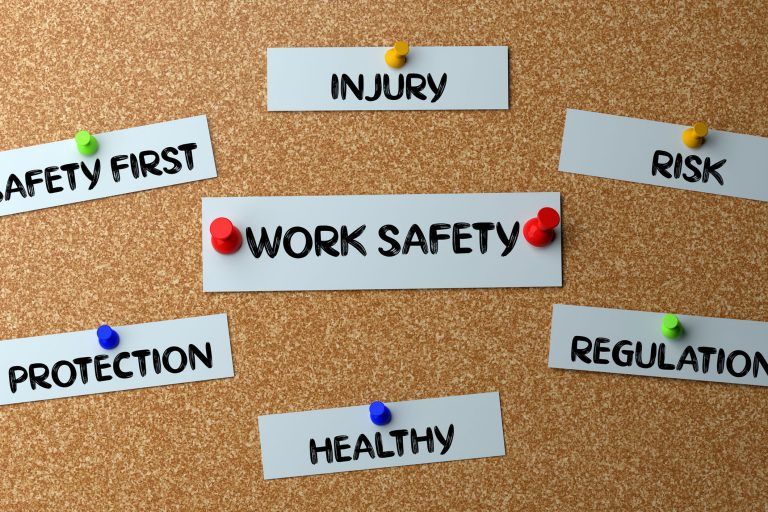
July 14, 2021
Published by Sherrard Kuzz LLP July 8, 2021 On July 1, O. Reg. 420/21: Notices and Reports under Sections 51 To 53.1 of the Act – Fatalities, Critical Injuries, Occupational Illnesses and Other Incidents under the Ontario Occupational Health and Safety Act (“Regulation 420/21”) came into effect, to streamline the notice and reporting requirements under the Occupational Health and Safety Act (“OHSA”). Regulation 420/21 incorporates the definition of “critical injury” from its former regulation: places life in jeopardy produces unconsciousness results in substantial loss of blood involves the fracture of a leg or arm but not a finger or toe involves the amputation of a leg, arm, hand or foot but not a finger or toe consists of burns to a major portion of the body causes the loss of sight in an eye. It also consolidates the notice and reporting obligations formerly found in various industry-specific regulations under the OHSA. As such, the notice and reporting requirements in the following regulations have been revoked: Regulation 851: Industrial Establishments Regulation 854: Mines and Mining Plants Regulation 855: Oil and Gas – Offshore Regulation 859: Window Cleaning Regulation 861: X-Ray Safety Regulation 213/91: Construction Projects Regulation 67/93: Health Care and Residential Facilities Regulation 629/94: Diving Operations Regulation 414/05: Farming Operations The regulation prescribes the content of the written report or notice to be provided by an employer or constructor under Sections 51-53.1 of the OHSA. The regulation requires an employer or constructor to retain for at least three years a copy of any written notice or report required under Sections 51 to 53.1 of the OHSA. The regulation permits an employer or constructor to file a written report or notice electronically with the Ministry of Labour, Training and Skills Development, through an Ontario Government website (with forms available shortly). An employer governed by the OHSA should review its accident reporting policies and protocols to ensure they comply with the requirements of Regulation 420/21.
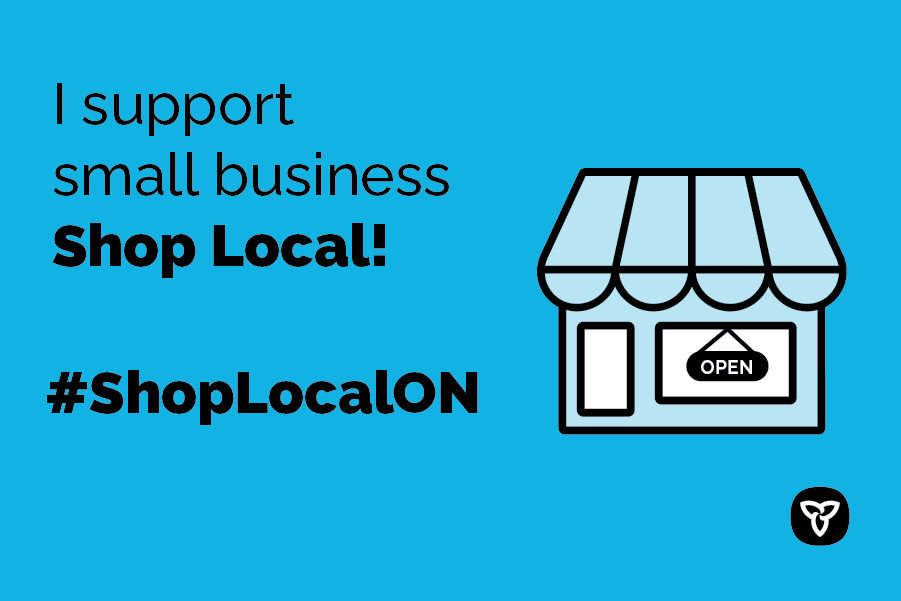
March 5, 2021
Published by OHS Canada March 4, 2021 The Ontario government has hired over 100 new occupational health and safety inspectors to support business inspection campaigns. The new inspectors have begun a condensed training program, and will begin making field visits with a mentor within five weeks of their start date, according to a news release. They are scheduled to be fully trained and deployed by July 1. “As the province continues to reopen, we need businesses of all sizes to do better as there are no shortcuts to safety,” said Monte McNaughton, Minister of Labour, Training and Skills Development. “With a new total of more than 500 inspectors, our government is building the largest team of inspectors in Ontario’s history to educate business owners, enforce public health measures and keep workplaces safe now, and for many years to come.” To date, Ontario’s provincial offences officers have conducted more than 13,374 COVID-related workplace inspections and investigations across the province since the beginning of 2021, issuing 9,480 orders and 373 tickets, and stopping unsafe work 15 times. These inspections have demonstrated that the majority of businesses are learning how to operate safely during COVID-19 and appreciate the support and guidance from the province, according to the government. Workplace inspections continue to focus on educating small businesses across the province to help them reopen from lockdowns safely. Over the past week, 110 provincial offences officers in Eastern Ontario, Durham Region, and Wellington-Dufferin-Guelph visited 1,081 workplaces, the majority of which were small businesses with fewer than 25 employees. The two-stage inspections provide COVID-19 education and guidance for small businesses in the first round — particularly those that were closed during the provincial shutdown — followed by more enforcement-oriented inspections on follow-up visits. Over the coming weeks, officers will return to businesses that have already been visited in Eastern Ontario, Durham Region and Wellington-Dufferin-Guelph, shifting toward enforcing COVID-19 safety requirements, and issuing orders and tickets, if necessary. Additional two-stage campaigns, focusing on small businesses, are scheduled to take place in York Region on March 5 and 6, Windsor Essex on March 6 and Waterloo Region from March 11 to 16.
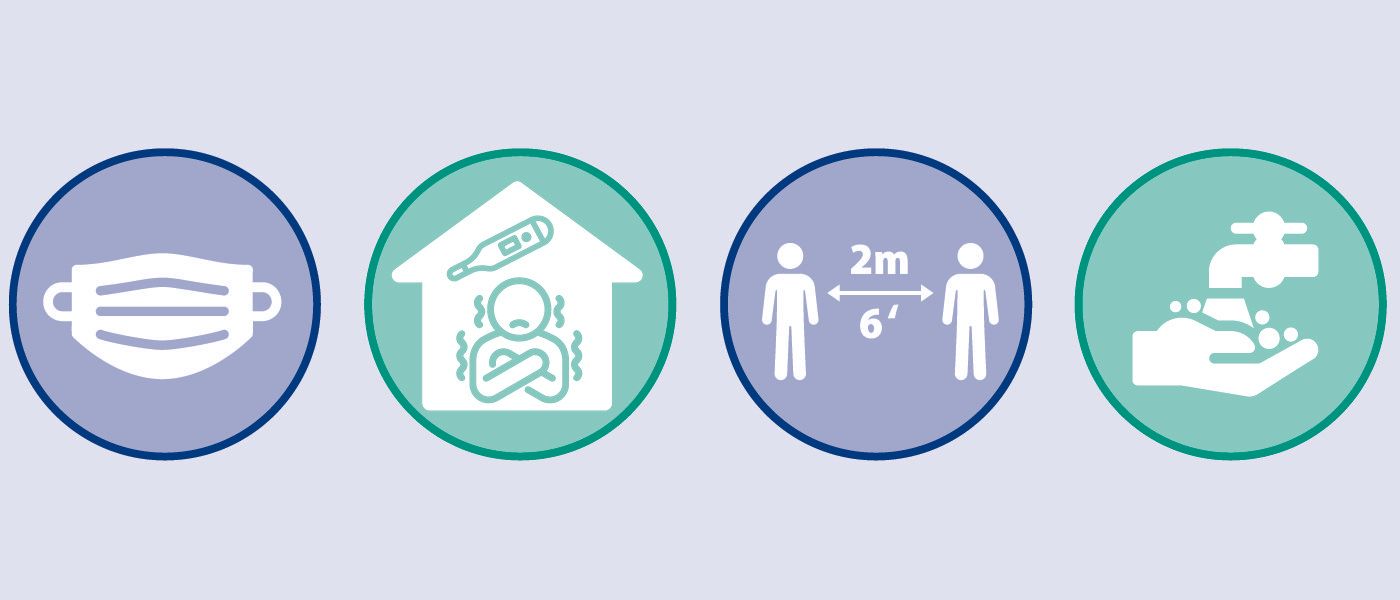
January 25, 2021
Published by HSE Consultant Amanda Faucher of WD Safety Resource Inc. January 25, 2021 It’s been a year full of change, uncertainty and adaptability. This year has challenged all areas of society from how we interact with one another, to how we perform our work from day to day. It’s been one year since the day we started hearing murmurs about a growing “pandemic” referred to as the novel coronavirus – COVID-19. By March, the government had declared at State of Emergency Order. Work was halted, streets empty, and thus began “a new normal.” Fast-forward a year later – Ontario remains in a State of Emergency and a Stay at Home Order is in place. With anxiety and mental burn out mounting, all aspects of this pandemic must be considered – including the fall-out of isolation and other protective measures and how a company can achieve success during these uncertain times. Adaptability is Key While navigating through this pandemic, employers were left to consider many different challenges before re-opening their doors – daily changes to legislation, adhering to ever-changing recommendations and guidelines, implementing protective barriers into the workplace to protect workers. Implementing and monitoring the internal Infection Disease Emergencies Safety Plan is the most logical way to review the success or failure rates of the plan in place. It is important to stay current and informed during high transmission times to ensure the workplace is ready for any potential exposure. Speak to your workers! These individuals are performing their jobs daily – they will have some of the best insight to help enhance barriers and measures in place. If your workplace has a Joint Health Safety Committee (JHSC) or Health and Safety Representative (HSR) then utilize their expertise when reviewing the plan in place. If something isn’t working, change it. No plan will ever be perfect, and no barrier will ever be flawless. It is so important to review and assess all aspects of the workplace and identify processes or barriers that could be improved. The Human Aspect Another aspect to consider is workers who are working from home. As humans, we require socialization to thrive and grow. These measures have restricted our abilities to connect in a manner we are use to, or may be comfortable with. People are isolated from their fellow workers, their families and friends – leading to a decline in mental stability and a rise in anxiety, depression, and addiction. Another frustration is implementing new technology into a work process; not everyone is computer savvy which creates a whole other level of frustration and anxiety. Others view technology as a “distraction” and may see this implementation as a negative move. Remind your workers to be patient during these changes, and that everyone is learning these new processes together. Reassuring workers that their feelings are both valid and shared will instill confidence within the workforce. Preparing and maintaining a solid training program, along with flexible Work from Home and Return to Work procedures are just a few critical ways employers can show that these changes implemented, while challenging at first, are a positive force in maintaining a work-life balance. It should also be noted that while these procedures are in place to help integrate new work strategies, that workers are encouraged to contribute to these programs by providing feedback – this allows the workers to feel they contributed to the development of an equitable plan. New Normal….or Just Normal? This “new normal” shifted the way society operates as a whole. Not one individual hasn’t been affected by the pandemic – but we need to continue to adapt and be flexible. Chances are, the way things were may never return as it once was. Employers have a duty to protect their workers under the Occupational Health and Safety Act. Employers must ensure they are training their workers on all new policies, procedures and safe work practices implemented at the workplace. Implementing a solid Infectious Diseases in the Workplace Safety Plan – this should be all-encompassing to any pandemic that may impact socio-economic growth – will reiterate to the workforce that not only does the employer care about their well-being, they are actively prepared to protect it. Employers must remember to connect with their workforce who are isolated at home and communicate their importance to the work process, regardless where it is being performed. It is important to reiterate with all workers, no matter where they report from, that they are critical to the success of the workplace – all in this together starts with including everyone in the process. Let us Help At WD Safety Resource Inc. , we have been navigating this pandemic alongside small and medium sized businesses across Ontario since the beginning. We understand just how overwhelming everything may feel right now – training moving to virtual platforms, training certification expires, implementing and updating existing policies and procedures…it’s a lot ! Our expert Health, Safety and Environmental team is ready to help take the stress off of internal training needs (generic or site specific), manual maintenance and risk assessments to help identify gaps/deficiencies in the existing workplace. Click here to contact us – we are all in this together!

January 22, 2021
Published by Holly McKenzie-Sutter of The Canadian Press January 22, 2021 TORONTO — As Ontario struggles to beat back a dire wave of COVID-19, workplace spread has been singled out by public health experts, mayors and top health officials as a major source of infections. Experts and workers say government measures so far haven’t directly targeted the issue, but fairly simple practices would help track and reduce infections. Epidemiologist Colin Furness at the University of Toronto’s Dalla Lana School of Public Health said there should be clear consequences for employers that don’t take proper precautions at this point in the pandemic. “We know from contact tracing data and outbreak investigations what some of the most risky environments are. We should be coming down on them like a ton of bricks,” Furness said. Hundreds of people have been infected in recent outbreaks linked to workplaces, including at least 121 workers at a Canada Post facility whose cases were reported this week and more than 140 people at a Cargill-owned meat processing facility in Guelph, Ont., last month. Hundreds of migrant workers tested positive on Ontario farms last summer, and more than 5,000 long-term care staff have been infected to date. But observers said there isn’t consistency when it comes to penalties for employers, or even naming workplaces where outbreaks happen. Traditionally, workplaces have been challenging for public health because harsh enforcement might mean future issues are covered up, Furness said. There are some signs of change, however, led by Toronto Public Health. The health unit said this month it would name employers with significant outbreaks and enforce reporting of cases among workers, a move Furness called “revolutionary.” Considering Sick Leave Putting pressure on employers is also important to make sure other measures are effective, Furness said, including paid sick leave, which has become a prominent political issue in Ontario. Mayors from province’s largest cities have been calling for months for accessible, universal paid sick leave so workers don’t come to work sick over fear of losing income — an argument supported nearly universally by public health experts. Janice Mills, who has a job in auto manufacturing, said sick leave is the biggest issue at the Glencoe, Ont, plant where she works with about 50 other people per shift. Workers can apply for the Canada Recovery Sickness Benefit introduced to support people missing work over a COVID-19 diagnosis or exposure, but they’re only eligible if they miss 50 per cent of the workweek. That’s an issue for hourly workers at Mills’ plant, she said, because if someone falls ill on Thursday or Friday, they can’t make use of the benefit until the following week. “That’s very difficult for people to wrap their heads around,” Mills said. Labour Minister Monte McNaughton said Ontario isn’t looking to implement its own sick leave policy because there are still millions of dollars available through the federal benefit. He said the program is sufficient, but workers may not know about it, and he’s asking federal ministers to ensure there isn’t a delay in getting money out to people. “I feel strongly that we shouldn’t duplicate this program,” McNaughton said in an interview. Furness said sick leave is important, but it doesn’t guarantee workers won’t face repercussions for accessing it — so employers should be held accountable if people are pressured into working while sick. Tim Sly, an emeritus professor of epidemiology at Ryerson University, pointed to regular asymptomatic testing as another key measure that would help assess workplace spread. He noted other regions have made use of rapid tests to find the virus among people who may not know they’re infected, but Ontario has until recently been reluctant to introduce the practice. “Why we’ve delayed it so often, I have not a clue,” he said. “It costs so little, it’s easy to do, and if you repeat it, you’re getting up to really good standards of screening.” Usage of Rapid Tests Some industries in Ontario, such as film and television production, are already regularly testing employees for COVID-19, and the government plans to ramp up asymptomatic testing in the coming months by sending rapid tests to hard-hit sectors like farms, manufacturing and long-term care. McNaughton said an asymptomatic testing pilot has already begun on construction sites in the Greater Toronto Area, and he said there will be “huge emphasis” on testing workers going forward. He also pointed to the government’s recent “inspection blitz” of big-box stores, which is expanding to more industries. Most fines have been relatively small, at less than $1,000 per infraction, but McNaughton said some larger investigations are underway, and employers should be aware of the potential for fines up to $1.5 million. “I hope my message was clear to every big corporation out there, every shareholder, that if they’re not having a safe work environment for their workers, and for customers, I won’t hesitate to shut them down,” he said. Meanwhile, frontline workers say appreciation for their work isn’t often reflected in the province’s official pandemic response. Brittany Nisbett, who works at a group home for disabled adults in the Niagara Region, said new restrictions announced this month haven’t changed anything in her working life — in fact, she said new limits on store hours have made it harder to complete errands during time off. She said it’s been an emotionally taxing year, especially when co-workers and clients have tested positive for the disease, but one silver living has been growing public acknowledgment of the work she does. She’d like to see that reflected with a permanent wage increase, paid sick days and more staff for support. “If you’re going to call us heroes, then I think that we need to be treated like heroes,” Nisbett said.
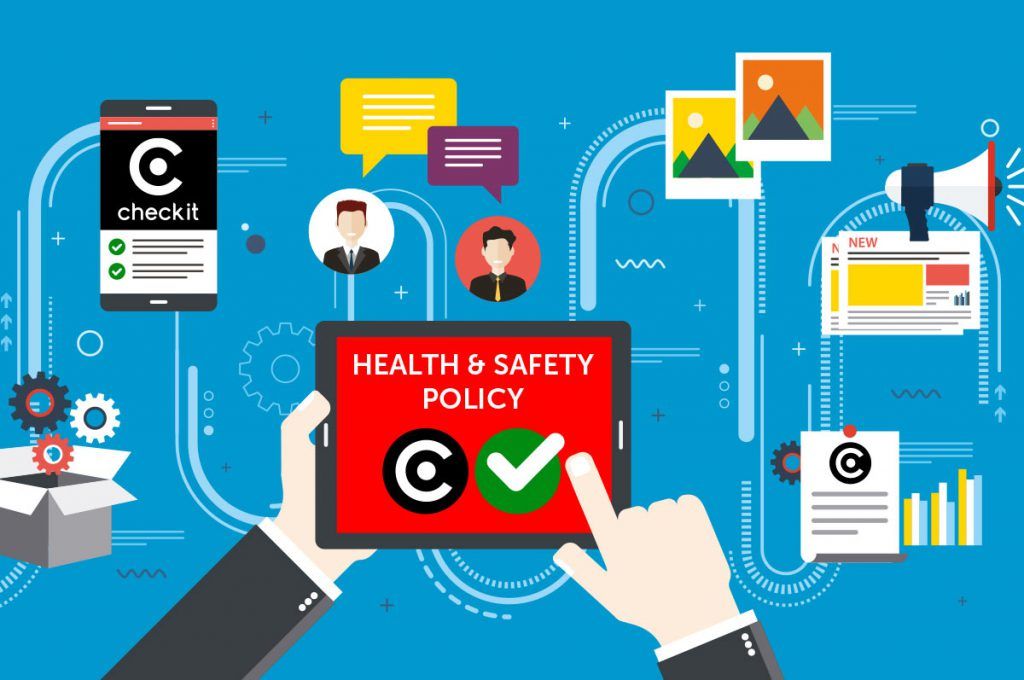
November 5, 2020
Published by HSE Consultant Amanda Faucher of W D Safety Resource Inc. November 5, 2020 At W D Safety Resource Inc. we assist workplaces in enhancing the internal Health and Safety culture at the workplace. We provide a variety of services including risk assessments, auditing, training, and assisting the Joint Health and Safety Committee (JHSC) or Health and Safety Representatives (HSR's) as they navigate this new world. Our consultants are equipped with industry experience and provide sound, up-to-date recommendations while following new and existing legislation, as it's enforced. Let us help you get your business back on track! As COVID-19 continues to alter our way of living, Employer's are grappling with trying to revive their business in a stunted economy and ensuring their workforce and clients are following suggested guidelines and legislative instruction to keep safe, all while trying to maintain their own personal life and mental stability. Mental fatigue is now at the forefront of this pandemic - whether it stems from isolation, or continued work as an essential business, Canadians are feeling the impact in a number of ways. The Canadian Mental Health Association is reporting a drastic decline in Canadians mental health all directly related to the pandemic. Canadians are experiencing high levels of anxiety, depressions, isolation and substance abuse at a rate not yet experienced. So how are Employer's supposed to focus on reviving their business, implement new safety protocols, ensure workers and clients are safe and following legislated guidelines, potentially even having to hire a new workforce and train them, and ensuring their workforce is not suffering from the effects of mental burnout...without burning out themselves? Impossible. Let us help you! Our consultants are constantly reviewing newly released legislation, and observing upcoming legislation as it flows through the pipeline. Employers cannot....and should not have to do this alone. We have developed contingency plans and infectious disease policies, improved return to work programs, enhanced Health and Safety programs, and have assisted essential businesses throughout this pandemic...as an essential business, we have been working alongside these Employers and understand how stressful this has been for everyone. We have compiled a list of new and amended legislation impacting workplaces across Ontario. Keeping up to date on ever changing legislation is your first step in compliance! Keeping Ontario Safe and Open - This framework is developed in consultation with public health experts, and will serve as an early warning system to restrict regions whose cases are surging in hopes to avoid broader closures that paralyze our economy. Download the PDF to learn more. O. Reg. 228/20 Infectious Disease Emergency Leave - This regulation was introduced on May 29, 2020. This all encompassing regulation was initiated by the COVID-19 pandemic, but includes all forms of the novel coronavirus (SARS, MERS, COVID-19) and outlines and adjusts the meaning of a leave. For more information, click here. O. Reg. 364/20 Rules for Areas in Stage 3 - This regulation was enforced as of July 13, 2020. Updates are made as the pandemic continues. Latest update is the pre-screening process for workplaces under section 2(3) of this regulation. Click here for more information. COVID-19 Self Assessment - Adjustments are made as we begin to understand more about COVID-19. Screening Questions are often updated to reflect public health guidance. Click here to learn more. Effective January 1, 2021 - The Government of Canada has released SOR/2020-130 - Workplace Harassment and Violence Prevention Regulation. Click here for more information. AODA Compliance Report - The deadline to file an Accessibility Compliance Report has been extended to June 30th, 2021 due to COVID-19. Businesses and non-profits with 20 or more employees and public sector organizations must follow these steps to complete an accessibility compliance report. Click here to learn more.
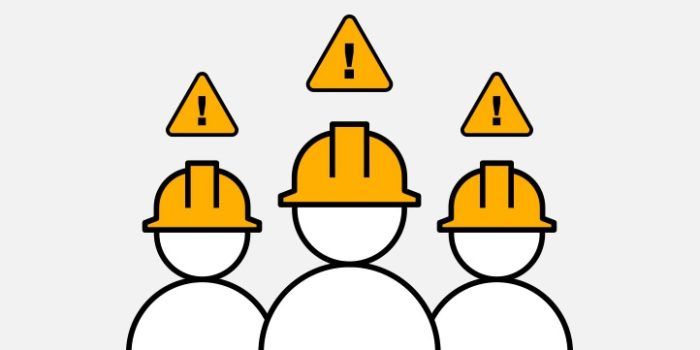
October 15, 2020
Published by Marcel Vander Weir October 13, 2020 Canadian workplaces are becoming less safe, according to the latest data on occupational health and safety across the country. Released April 27, the 2020 Report on Work Fatality and Injury Rates in Canada indicates 1,027 workers died of work-related causes in 2018, marking an increase of 76 from 2017. The report is based on data from 2018 — the latest available statistics. Comparable 2019 statistics will not be available until early 2021. In 2018, most jurisdictions also reported higher injury rates, with Ontario and New Brunswick leading the way at 15 per cent, among provinces with 100,000 employees. “That is noteworthy because for the last couple of decades at least, we’ve seen pretty consistent declines in our injury rates across Canada,” said Sean Tucker, business professor at the University of Regina and the report’s main author. “Now we’re seeing that bottom out and the trajectory may be upward. So that’s of concern.” “Another concern is that the injury related fatality rate increased in many jurisdictions in Canada,” he said. “You put those two together — increasing rate of injuries, increasing rate of injury fatalities — it suggests that in relative terms, workplaces are getting less safe for workers in Canada.” Seeing the needle move the wrong way in 2018 is tough to swallow, said David Johnston, chair of the Board of Canadian Registered Safety Professionals (BCRSP) in Mississauga, Ont. “It’s not getting better really,” he said. “It is extremely disappointing to see this happening because there’s so much effort being made and so much money being spent. And it doesn’t seem that we’re able to have any impact.” “It is extremely disappointing because of the effort that’s being made.” The data also spotlights continued issues in Canada’s Arctic, in terms of workplace safety, said Tucker. Northwest Territories and Nunavut had the highest five-year average injury fatality rate (8.1 deaths per 100,000), according to the report. “This is a very small jurisdiction population-wise, but their injury fatality rate of 8.1 deaths per 100,000 really is significantly higher than other jurisdictions in Canada,” he said, noting attention should be paid to this issue. Together with co-author Anya Keefe, Tucker examined statistical data on two types of work fatalities. Injury related deaths include motor vehicle incidents, electrocution and falls from height, while occupational disease fatalities could be due to exposure to asbestos or succumbing to mesothelioma, he said, noting the current COVID-19 pandemic will no doubt have an effect on 2020 statistics. Call to Improve Data Statistics for this annual report are drawn from data provided by the Association of Workers’ Compensation Boards of Canada (AWCBC) in Toronto. The data originates from provincial workers’ compensation boards, each of whom collect it independently and publish it annually — usually between April and September of the following year, said Tucker. The AWCBC then standardizes the data and publishes it online. The resulting timing lag is of issue for those attempting to identify current safety trends. “Here we are talking about 2018 data — that’s over a year and a half ago,” he said. “We’re limited in terms of the timeliness of the data.” “From a prevention perspective and public awareness perspective, having timely data is so important.” While companies are able to track progress through provincial ministries of labour, access to interprovincial comparisons are not typically available, said Tucker. “That’s just really important for prevention and awareness. And then likewise having more granular, timely statistics is helpful to identify which sectors of industry are experiencing relatively more injuries and deaths than other sectors,” he said. “That, too, will inform prevention activities.” AWCBC CEO Cheryl Tucker declined a request for comment on this report. “The AWCBC is not mandated to speak on behalf of our members, nor do we provide any analysis of data,” she stated. Data harmonization has been on the agenda for decades now as general data is “almost non-existent,” according to Johnston. “We keep talking about this,” he said, noting gathering data is specifically onerous for organizations that operate across provincial borders. “It’s not only a good thing for trying to understand what’s happening, but it’s a good thing for business.” Transparency and clarity in workplace health and safety statistics would be of benefit for all, said Sean Tucker. “I don’t think it’s any deliberate attempt to hide statistics whatsoever,” he said. “It’s just we have a particular structure in Canada — due to our constitution — where provinces have primary responsibility for OH&S and WCBs, and these lags are just built in.” For this to change, provincial boards would need to take the lead, said Tucker, as they are in the best position when it comes to publishing more timely information. Even the release of key statistics prior to the annual Day of Mourning held each April could be a major step forward for public awareness, he said. “I think there’s an opportunity there to do that,” said Tucker. “Public awareness is really important to prevention.” The AWCBC should take the lead on improving data availability, according to Johnston, who noted a national data bank should exist where statistics can be extracted and broken down by various search terms. “It’s a mess — there’s no other word for it,” he said. “It takes a very long time to get these reports and then the reports together are at such a very high level, that you can’t really set any plans or objectives based on (them).” “We need to come up with not only harmonized reporting, but we also need to take that information that we get so that we can analyze it and understand what the trends are. It’s too late when somebody’s died.”
Location
Main Office333 Green Road, Unit 6Stoney Creek, Ontario L8E 2B1
© 2025
All Rights Reserved | WD Safety
